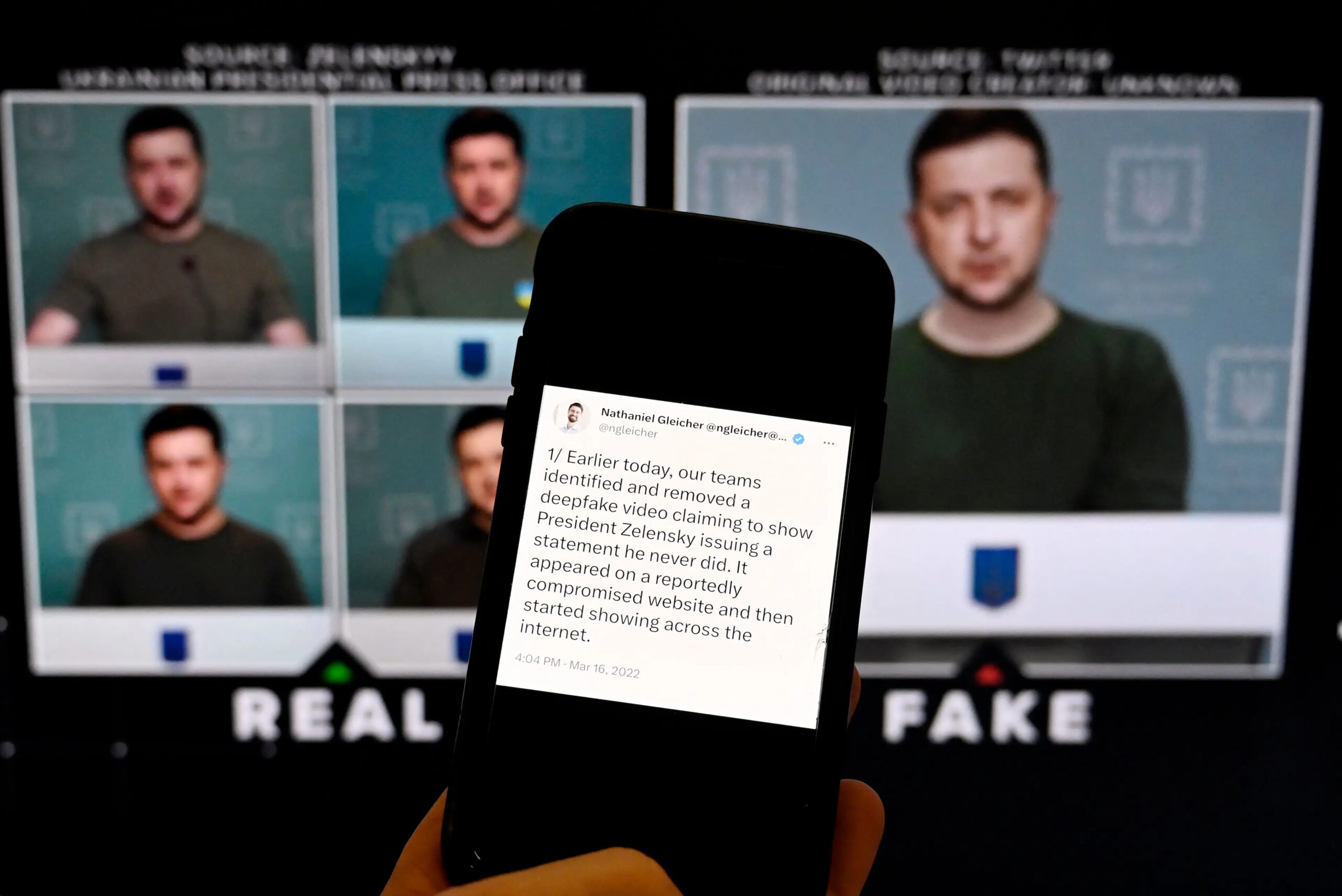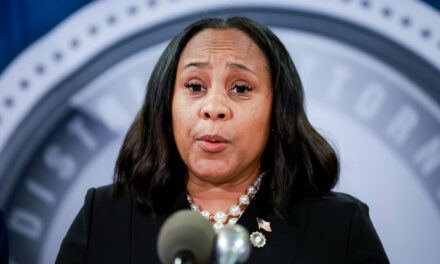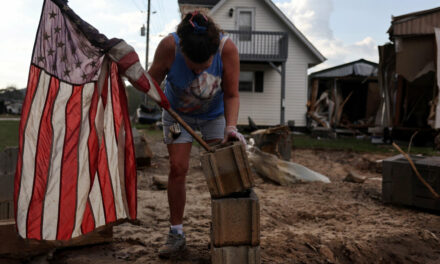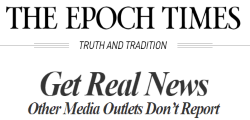We support our Publishers and Content Creators. You can view this story on their website by CLICKING HERE.
Gone are the days where the biggest concern is students drawing alien ears on their science teacher or printing images of a friend’s face connected to a four-legged body with scales and a tail.
That was 30-something years ago. Now, schools are being forced to develop emergency response plans in case sexually explicit images of students or teachers generated by artificial intelligence (AI) pop up on social media.
In two separate cases, school principals were seen or heard spewing racist, violent language against black students. Both were AI-generated deepfakes—one was produced by students and the other was made by a disgruntled athletic director who later was arrested.
Deepfakes are defined as “non-consensually AI-generated voices, images, or videos that are created to produce sexual imagery, commit fraud, or spread misinformation,” according to a nonprofit group focused on AI regulation.
Legislation Targets Deepfakes
On Sept. 29, California Gov. Gavin Newsom signed into law a bill criminalizing AI-generated child porn. It’s now a felony in the Golden State to possess, publish, or pass along images of individuals under the age of 18 simulating sexual conduct.
The federal bill defines a deepfake as “a video or image that is generated or substantially modified using machine-learning techniques or any other computer-generated or machine-generated means to falsely depict an individual’s appearance or conduct within an intimate visual depiction.”
Sen. Ted Cruz (R-Texas) speaks at a news conference to unveil the Take It Down Act to protect victims against non-consensual intimate image abuse at the U.S. Capitol on June 18, 2024. Andrew Harnik/Getty Images
School districts, meanwhile, seek guidance on an emerging problem that threatens not just students, but also staff.
At Maryland’s Pikesville High School in January, a fake audio recording was made of the principal. School officials enlisted the help of local police agencies and the FBI.
The suspect, Dazhon Darien, 31, an athletic director, was charged with theft, stalking, disruption of school operations, and retaliation against a witness.
But as AI technology continues to evolve, he said, it may be necessary to develop a watermarking system for generated audio or video to replace outdated systems for monitoring and safeguarding school computer use.
“As an organization committed to diversity and inclusion,” the statement said, “the Carmel Central School District Board of Education is appalled at, and condemns, these recent videos, along with the blatant racism, hatred, and disregard for humanity displayed in some of them.”
A parent, Abigail Lyons, said a co-worker who also has children in the district showed her a text containing seven different videos.
“I basically fell to the floor,” said Lyons, who is biracial. “It was horrific. It looked so real.”
They re-watched the videos and noticed that the lip movement and body language were a bit off from the sound. Lyons said most parents in the district had already seen or heard about the videos and probably knew they were deepfakes before Carmel school officials publicly acknowledged the incident and declared there “was no threat.”
Carmel High School, Carmel, N.Y., on Oct. 7, 2015. Will2022/CC
Lyons said the event scared her daughter, and that events like school lockdowns or emergency drills still trigger anxiety and fear stemming from the 2023 deepfake.
“Seventh graders should not have to worry about these things,” she told The Epoch Times.
Lyons said she is unaware of any deepfake incidents so far this semester, but students have threatened each other on social media, including one threat that led to a two-hour building lockdown.
“We still don’t know what it [lockdown] was for,” she said. “The transparency still isn’t there.”
The Epoch Times reached out to the district offices in Carmel, New York, and Baltimore County, Maryland, but didn’t receive a response.
California’s new law was prompted by several deepfake incidents that victimized students.
Patrick Gittisriboongul, assistant superintendent for technology and innovation in the Lynwood Unified School District near Los Angeles, said his district implemented a zero tolerance policy that requires personnel to notify law enforcement, provide services to victims, and deploy an AI incident response plan.
The district restricts AI use, employs content filters for online functions, and requires students and staff to follow guidelines for the ethical use of technology.
“Incidents in other Southern California districts prompted us to take proactive measures,” he told The Epoch Times via email. “Given the rapid emergence of AI and its potential misuse, we drafted a comprehensive policy to ensure our district is prepared to address any future issues involving deep fakes or inappropriate AI-generated content.”
Teenage girls look at a cellphone during a break on school campus. Nimito/Gettyimages
The report is based on a survey of about 3,300 respondents across the country representing grades 6–12, and including parents and teachers. Thirty-eight percent considered the deepfake content offensive, and 33 percent described it as sexually explicit.
Most teachers said they had not received training on how to respond to deepfakes and that their districts had not updated their policies to deal with these types of incidents, according to the report.
The report also said that most of the teachers surveyed indicated their employers have taken little action to address the threat of deepfakes. Less than a quarter of respondents said the word deepfake has been added to the district sexual harassment policy or student code of conduct.
Teachers prefer to contact law enforcement to discipline deepfake perpetrators, with long-term suspension as the second choice and counseling as the third, the report said.
AI Regulation
A consortium of nonprofits, including the National Organization for Women, the Future of Life Institute, and the Center for Human-Compatible Artificial Intelligence, launched the Campaign to Ban Deepfakes (CBD), a global public awareness effort, earlier this year.
CBD is circulating an online petition to support its call for criminalizing all deepfakes and holding technology developers and content creators liable for their actions.
“The only effective way to stop deepfakes is for governments to ban them at every stage of production and distribution,” CBD states on its website. The site notes that deepfake sexual content increased by 400 percent and deepfake-related fraud by 3,000 percent between 2022 and 2023.
“There are no laws effectively targeting and limiting the creation and circulation of deepfakes, and all current requirements on creators are ineffective,” CBD said.

This illustration photo shows a phone screen displaying a statement from the head of security policy at Meta with a fake video (R) of Ukrainian President Volodymyr Zelenskyy calling on his soldiers to lay down their weapons shown in the background, in Washington, on Jan. 30, 2023. Olivier Douliery/AFP via Getty Images
Legal Guidance
There is plenty of free legal advice online that school districts can use to get ahead of the threats.
In the latter, district officials said they didn’t call the police after a female student was victimized because their lawyers told them they weren’t required to report “fake” images.
AALRR attorneys declined an interview with The Epoch Times, but the company’s website says districts can be sued for failing to respond appropriately to deepfakes under laws that predate AI. They advise school leaders to establish AI policies and educate students on how AI can be used responsibly as well as misused.
The more difficult task is understanding and addressing actions that take place off school grounds but still impact K–12 school communities. The boundaries separating parent versus school responsibilities aren’t always clear.
“Student misuse of AI-generated content likely raises similar First Amendment concerns,” AALR’s website notes. “A school seeking to punish a student for off-campus misuse of AI would need to show that student misuse of AI substantially impacted the school.”
While agencies attempt to cement a social norm worldwide, millions of students and school employees remain vulnerable.
Education leaders should work to raise awareness of the harms and consequences of AI-generated impersonations and make it clear to school communities that using this emerging technology to damage another person’s reputation is a form of harassment, Siegl said.
“Let law enforcement figure out if it’s a deepfake or not,” he said.

 Conservative
Conservative  Search
Search Trending
Trending Current News
Current News 







